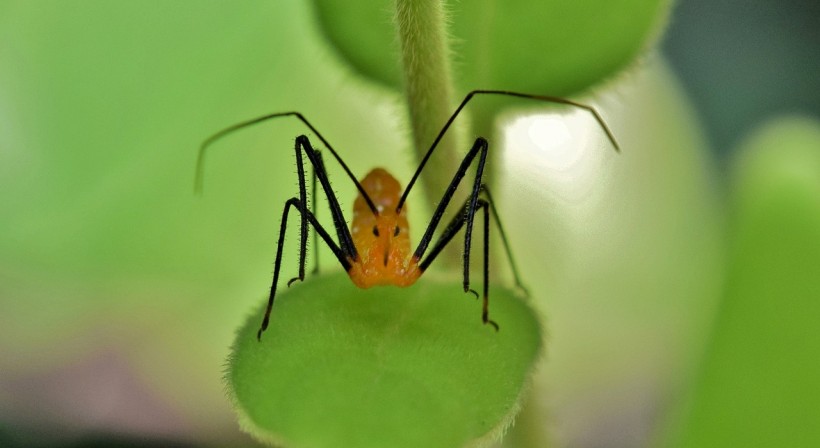In an uncommon instance of tool utilization among insects, a certain type of bug called the Australian assassin bug enhances its hunting efficiency by coating its body with the clingy resin of spinifex grass. Studies have shown that the resin from the grass was quite popular among the first humans of Australia as they use it for toolmaking.
These bugs, which belong to the Gorareduvius genus, are frequently observed lounging on the fronds of this plant that is endemic to arid parts of Australia and was also utilized by early settlers for crafting tools.

Assassin Bugs Use a Lethal Tool To Capture Their Prey, Giving These Insects Selective Advantage
Resin Coating Gives Assassin Bugs Advantage
Tool use in animals is a rare and complex phenomenon, especially in insects. In the study, titled "Assassin Bugs Enhance Prey Capture With a Sticky Resin" published in Biology Letters, researchers reported that assassin bugs use adhesive plant resins on their bodies to enhance their prey capture abilities.
According to Science Alert, this makes them an excellent case for studying the conditions that led to the evolution of tool use, which was once thought to be exclusive to humans. Researchers are now discovering that tool use is widespread among many animal species, including dolphins, pigs, birds, and bees.
To test the hypothesis that resin-coated assassin bugs would have greater success in catching prey, biologists from Macquarie University observed 125 Australian assassin bugs from the Gorareduvius species in the Kimberley region of Western Australia.
They found that resin-covered bugs were 26% more successful at capturing prey than those without resin. Although the resin did not fully stick the prey to the assassin bugs, it delayed the prey's response long enough for the bugs to grasp and stab them.
The Australian assassin bug is commonly found on Triodia stems, a native tussock grass that produces a sticky resin valued for its use in making hunting tools. The researchers predicted that if the resin was used as a tool, bugs covered in resin would be better at catching prey. The bugs were taken to a makeshift lab in a tent for observation, where their hunting success was monitored.
The results of the experiment meet the widely-used definitions of tool use. The assassin bugs manipulated an environmental item, the resin, by taking it out of its usual context and applying it to their bodies, which gave them a selective advantage through improved prey capture.
READ ALSO: Smartest Animal on the Planet? Clever Crows Can Assign Value to Tools They Use Just Like Humans
Other Animals That Use Tools in Innovative Ways
The findings suggest that the use of tools is not limited to primates but is also present in insects, highlighting the complexity and versatility of animal behavior. Other than them, other animals have also practiced using tools to their advantage. Below are some of them according to an article on the website Discover:
- Sea Otters- Sea otters use stones to break open shellfish in different ways, such as balancing stones on their bellies while floating on their backs or smashing shellfish against boulders.
- Octopus- A coconut octopus was seen in a video using clam shells and coconuts as armor and hiding places, carrying them with its tentacles and even combining two separate parts to create a tool.
- Crocodiles- Mugger crocodiles and American alligators use sticks balanced on their snouts as lures to attract birds, with some alligators only collecting sticks during nesting season.
- Crows- Crows can fashion tools out of multiple objects to achieve their goal, as shown in an experiment where New Caledonian crows were presented with small pieces that could be attached to make a stick long enough to reach their goal.
RELATED ARTICLE: Wild Cockatoos Seen Using Utensils From Trees Like Primates, Opens Possibilities in Evolution of Intelligence
Check out more news and information on Insects in Science Times.














